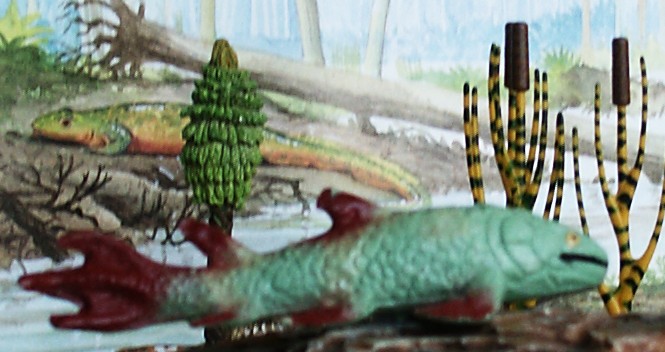
The Devonian and Carboniferous
by the Dinosaur Collector
updated 020607 proof 020606
The spread of land based plants especially trees made fresh water environments attractive to early vertebrates. The ancestors of modern fish and amphibians develop here. The traditional view on the origins of amphibians is that they evolved from lobe-finned fish. More recent molecular data, however, indicates a closer relationship to lungfish. The classic theory of Alfred Romer theorized that the lobbed-fin fish first used their fleshy fins to walk on the bottom of lakes, and then later moved onto land as the result of drought and the desire to take advantage of the population of invertebrates that inhabited the land as a food supply. Over time the lobes became legs. While this is certainly a plausible scenario, the most recent finds of the earliest amphibians show an animal that has lungs and legs but lacks the shoulders or ribs that land animals need. Legs and lungs seem to have been evolved not for moving around on land but for climbing through vegetation chocked swamp waters that were low in oxygen. Moving around on land was a later accidental benefit.
Paleozoic Diorama More Diorama
The age of the Amphibians, in the Late Devonian the first amphibians show up on the Euro American continent and appear to be restricted there until the Middle Permian. Eusthenopteron was thought to be close to the hypothetical ancestor of amphibians. There is a general but not exact correspondence of the pectoral bones in the fins to the amphibian foot. It is often pictured climbing out of the water, but its fins could only have moved slightly back and forth: the shoulder girdle would not have supported the body on land.

Starlux Eusthenopteron
Acanthostega, found in Greenland,was a relatively good swimmer and also able to move slowly on land. It had internal gills, and 8 fingers rather than the 5 of other tetrapods. The limbs are intended for swimming rather than walking.
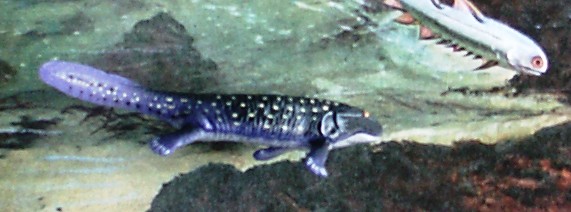
Kaiyodo Acanthostega from the Dinotales series.
Ichthyostega is from the Late Devonian Greenland, andhas the shoulders and ribs of a land animal. It was still primarily a water creature however, and existed mostly by eating fish. It had 7 digits on the back legs; the five-digit standard doesn't get set until the Carboniferous.

and Sega NHK Ichthyostega

Cog Ichthyostega and Sega NHK Ichthyostega
Early Carboniferous(Mississippian) Crassigyrinus lived in Scotland and was 6.5 feet long with tiny finlike limbs. It had reverted back to an aquatic mode of life.
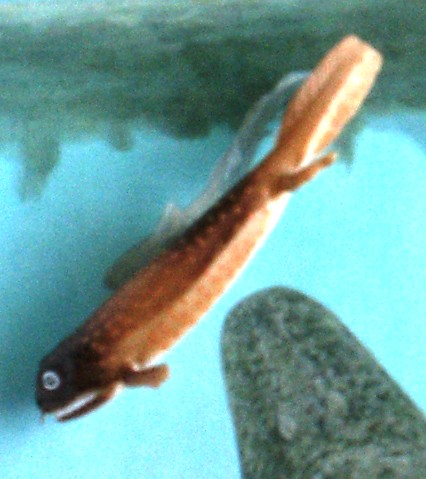
PlayVision Crassigyrinus from the prehistoric amphibian series.
Xenacanthus a fresh water shark was characterized by a large spine protruding from the back of its head as well as little forked teeth.
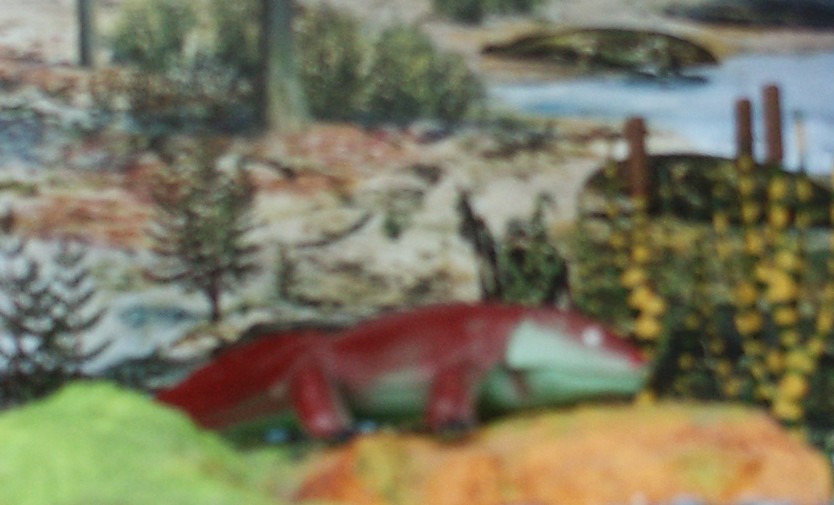 |
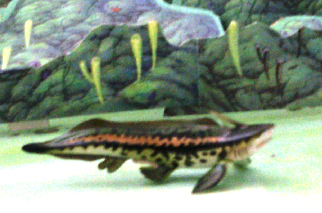 |
|
Starlux Ichthyostega |
Kaiyodo Xenacanthus from the Dinotales series. |

PlayVisions Eogyrinus from the prehistoric amphibian series.
return to Paleozoic menu
Click on the Site A icon Dioramas organized by period or by manufacturer.